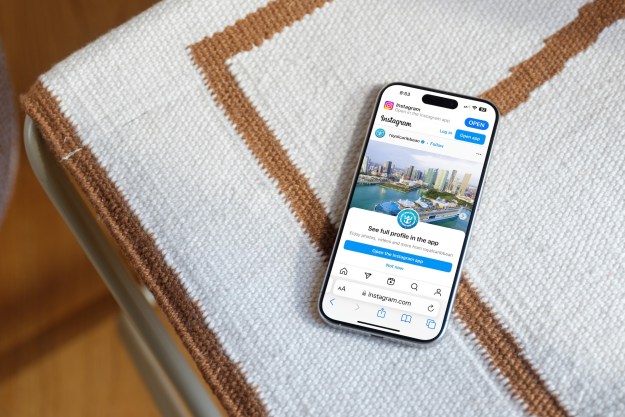Bluetooth trackers are a dime a dozen. There’s the Tile, a one-time-use Bluetooth tracker. Then there’s the LassoTag iBeacon, an inexpensive alternative with a rechargeable battery and thermometer. There’s also the Protag Duet, a colorful, circular adhesive tracker with up to eight months of battery life. And there’s the TrackR, a wireless tracker with a one-year of battery life and global positioning. But the market’s increasingly crowded nature hasn’t stopped new entrants from trying their luck. And the latest, the Pixie Point, is the most promising yet — on paper, at least.
At first glance, the Pixie Point appears to offer a veritable cornucopia of useful tracking features. A proprietary app promises to reveal the precise location of nearby Pixies with an easy-to-spot arrow icon. Pixies create their own local mesh network that enhances the accuracy of tracking. And Pixie Points resist water and don’t take in dust.
But all too often, the Pixie Point fails to deliver on its promises. That’s not to say it’s altogether useless — more often than not, the Pixie helps to point in the general vicinity of missing objects — but it stumbles more often than might be expected of a Bluetooth tracker at its price range.
Good ideas, poor execution
The Pixie Point experience is a polished package, though. The app provides simple onboarding instructions — and than it’s off to the races. Once you’ve downloaded the latest Pixie app, you’re instructed to designate one Pixie Point as an “anchor” — it’ll remain affixed to the top-right corner of your iPhone or iPad while you’re performing searches. Next, you’ll pair each additional Pixie Point by following the app’s provided diagrams. Once that’s done, you’re free to begin attaching the remaining points to the valuables you’re most worried about misplacing.

Its fairly self-explanatory from that point (no pun intended). The app includes a list of Pixie Points you’ve paired in the recent past, replete with their respective distances (in feet or meters, depending on your preference) from the anchor Pixie. Tapping on one launches the search interface, which requires you to “scan” your surroundings by holding your iPad or iPhone at arm’s length and sweeping slowly in the direction of the onscreen arrows. It’s sort of like taking a panoramic picture.
Unfortunately, it’s a little erratic. In our experience, the Pixie app had to do quite a bit of “scanning” before it had an adequate picture, so to speak, of its surroundings. It wasn’t uncommon for our reviewer to complete a couple of cycles in any given direction, and scans tended to be a little unpredictable. Some took seconds, while others took close to a minute.
Unfortunately, it’s a little erratic.
Once the app is finished scanning, though, the Pixie Point really shines –at least in theory. The app’s headlining asset is an augmented reality Pixie Dust feature that overlays an animated cloud of colored dust atop the location of the Pixie Point — even through walls and furniture. Audio cues of increasing loudness let you know when you’re getting close, and when you’re within a few feet, a “metal detector” interface — a moving gauge with red and green indicators — indicate the Pixie Point’s distance from the item within inches.
At least, that’s how it’s supposed to work. We had trouble getting the Pixie Dust display to work properly. In the absolute worst cases, it appeared in the opposite direction of the Pixie Point, realigning only when our reviewer began to walk toward it. It made a time-consuming process even more cumbersome.
We did find the “metal detector” genuinely useful. The steady beeping served as a good, reliable indication of our closeness to the Pixie Point, in some cases getting us back on track when the Pixie Dust led us astray.
Impressive technology, but poor user experience
The technology behind the Pixie Point is incredibly impressive. It creates a mesh network that ostensibly enables precise, GPS-like triangulation of each unit within a certain radius (150 feet outdoors and 50 feet indoors). The app lets you assign names to Pixie Points in order to better organize them — you can name one “car keys,” for example, and another “laptop” or “pet collar.” And you can create kits of things — say, a work bag — and receive an alert when objects go missing from it.
In contrast to some competing Bluetooth trackers on the market, Pixie Points don’t sacrifice features for compactness. They measure 1.9 x 1.4 x 0.1 inches, but last up to 12 months on a charge. (Unfortunately, the battery isn’t replaceable — when a Pixie Point dies, you’ll need to buy a new one.)
All in all, the Pixie Point ecosystem has a long way to go. It’s disappointingly inconsistent. And even when it does work, it requires finagling to get just right. That had us wondering: Wouldn’t all that time calibrating the Pixie Points be better spent searching for them ourselves?
It’s a question Pixie will have to answer if it wants to convince buyers to fork over $50 for two Pixies or $100 for four. At those prices, it’s easily one of the more expensive Bluetooth trackers on the market. Tile Mate costs $25. The HButler Orbit starts at $30. If Pixie wants its solution to measure up to the market’s best, it has its work cut out for it.
The Pixie Point is available direct from Pixie direct. It’s only compatible with iOS devices for now, but an Android app is due later this year.
Highs
- Promising mesh networking technology
- Polished app
Lows
- Inaccurate and inconsistent tracking
- Finicky setup process
Editors' Recommendations
- The 5 best Bluetooth trackers for 2024
- Samsung Galaxy SmartTag vs. Tile Mate
- The best pet trackers for your furry friends


